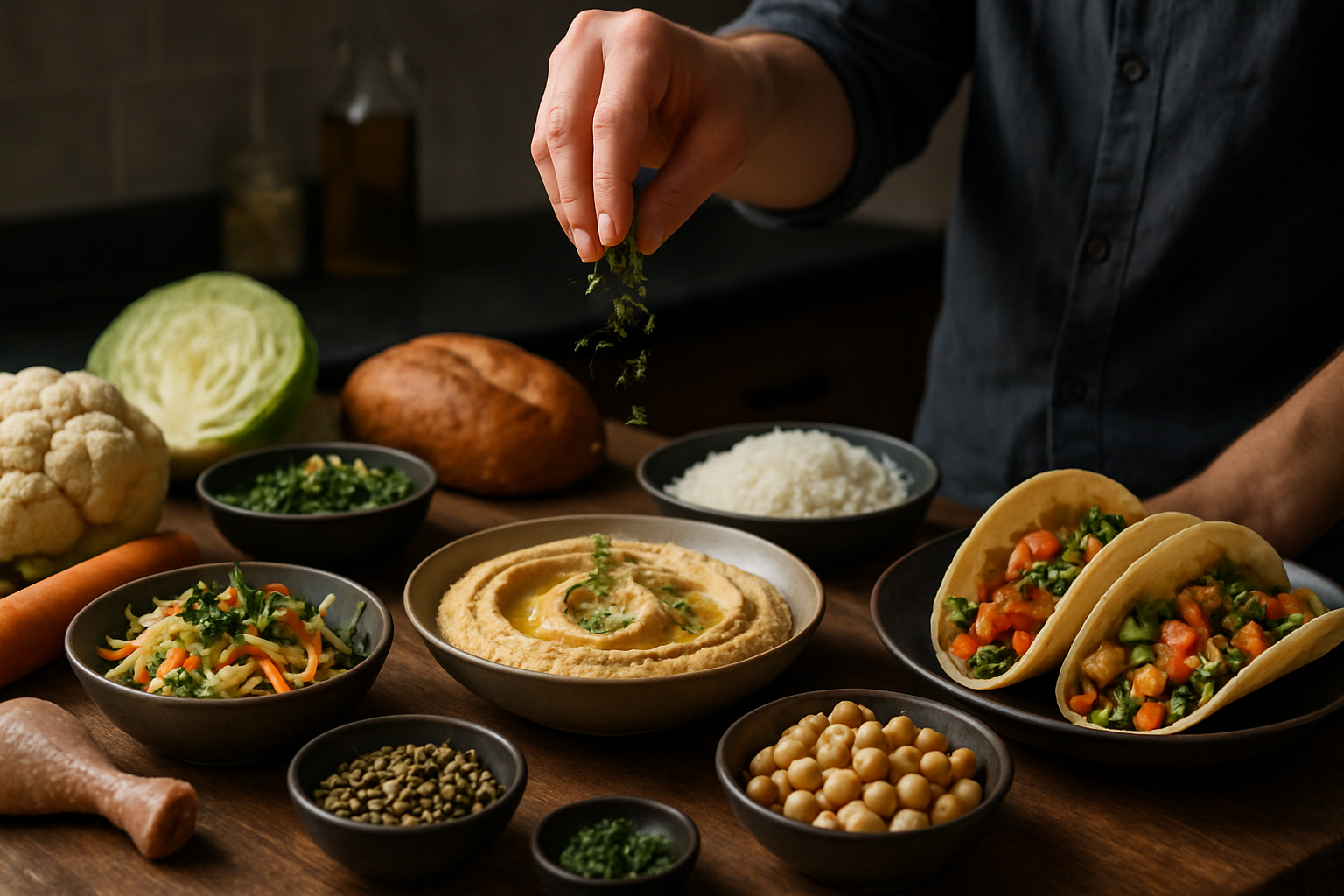Culinary Alchemy: Transforming Humble Ingredients
Unlock the secrets of kitchen wizardry and elevate everyday ingredients to gourmet status. This culinary journey explores innovative techniques and creative combinations that turn simple staples into extraordinary dishes. From reimagining leftovers to mastering flavor-packed shortcuts, discover how to transform your cooking and impress with minimal effort.

Elevating Legumes: From Side Dish to Star
Legumes, often relegated to the role of a humble side dish, possess untapped potential as the star of innovative culinary creations. By applying creative cooking techniques and flavor combinations, these protein-packed powerhouses can be transformed into gourmet delights. Consider the chickpea, for instance. When blended with tahini, lemon, and garlic, it becomes the beloved Middle Eastern dip, hummus. But take it a step further by roasting chickpeas until crispy and tossing them with spices for a crunchy snack that rivals any store-bought chip. Lentils, another versatile legume, can be elevated from a simple soup ingredient to a sophisticated main course. Try cooking them risotto-style with white wine and parmesan for a creamy, indulgent dish that challenges traditional rice-based versions. Even the modest black bean can be reimagined as a decadent dessert when pureed with cocoa and sweetener to create a velvety chocolate mousse that’s both nutritious and indulgent.
Vegetable Alchemy: Turning Produce into Culinary Gold
Vegetables often play second fiddle in many meals, but with a bit of culinary alchemy, they can be transformed into show-stopping dishes that rival any protein-centric meal. The key lies in applying techniques that intensify flavors and alter textures in unexpected ways. Take cauliflower, for example. When roasted whole and basted with spices, it becomes a dramatic centerpiece that can replace a traditional roast. Or consider the humble carrot – when slow-roasted with honey and harissa, it develops a complex, caramelized flavor profile that’s worlds away from its raw counterpart. Even the often-overlooked cabbage can be elevated to gourmet status when charred and served with a rich, umami-packed miso butter. By treating vegetables with the same care and creativity typically reserved for meats, chefs and home cooks alike can create plant-based dishes that are not only nutritious but also deeply satisfying and visually stunning.
Leftovers Reimagined: From Mundane to Magnificent
Transforming leftovers from mundane to magnificent is a skill that combines creativity, resourcefulness, and a touch of culinary magic. Instead of reheating yesterday’s meals, consider them as ingredients for entirely new dishes. Last night’s roast chicken can be shredded and mixed with spices, then stuffed into tortillas for flavorful tacos. Leftover rice becomes the perfect base for a vibrant fried rice, studded with vegetables and topped with a fried egg. Even stale bread can be revitalized – tear it into chunks, toss with olive oil and herbs, and bake for homemade croutons that elevate any salad. The key to successful leftover transformation lies in understanding flavor pairings and textures. Combine contrasting elements like crispy and soft, or sweet and savory, to create dishes that are more exciting than their original incarnations. This approach not only reduces food waste but also challenges cooks to think creatively, often resulting in new family favorites born from necessity and invention.
Spice Alchemy: Transforming Flavors with Global Influences
Spices are the alchemist’s tools in the culinary world, capable of transforming simple ingredients into complex, globally-inspired dishes. By understanding and experimenting with spice combinations from different cultures, home cooks can take their cuisine on a world tour without leaving their kitchen. For instance, a basic tomato sauce can be elevated to a Moroccan-inspired dish with the addition of cinnamon, cumin, and harissa. Or transform plain grilled chicken into a taste of India by marinating it in a blend of yogurt, turmeric, garam masala, and ginger. Even everyday vegetables can be given new life: roast carrots with za’atar for a Middle Eastern twist, or toss green beans with Chinese five-spice powder for an Asian-inspired side dish. The beauty of spice alchemy lies in its accessibility – with just a few key spice blends, cooks can create an infinite variety of flavors, turning simple meals into exotic culinary adventures.
Useful Tips & Facts:
• Toast whole spices before grinding to intensify their flavors.
• Create your own spice blends to customize flavors to your taste.
• Use herbs like cilantro or parsley stems in cooking for added flavor.
• Experiment with different cooking methods for the same ingredient.
• Learn about flavor profiles to create balanced and exciting dishes.
• Don’t be afraid to combine ingredients from different cuisines.
In conclusion, culinary alchemy is about seeing the extraordinary potential in ordinary ingredients. By applying creative techniques, experimenting with flavors, and thinking outside the culinary box, even the most humble components can be transformed into gourmet delights. This approach not only elevates your cooking but also reduces waste, stretches your budget, and expands your culinary horizons. Embrace the art of transformation in your kitchen, and watch as everyday meals become extraordinary culinary adventures.





